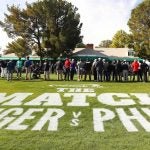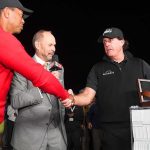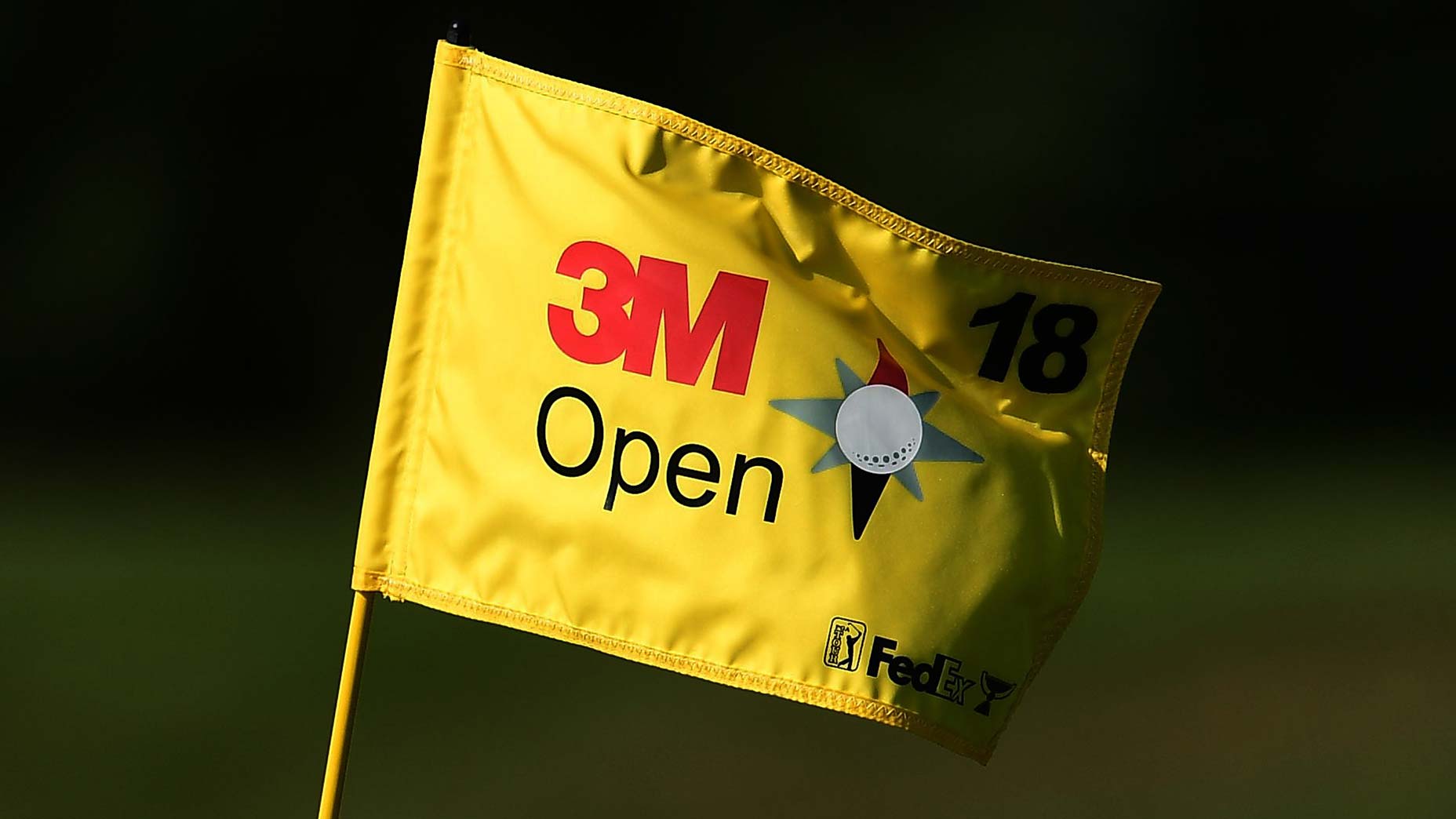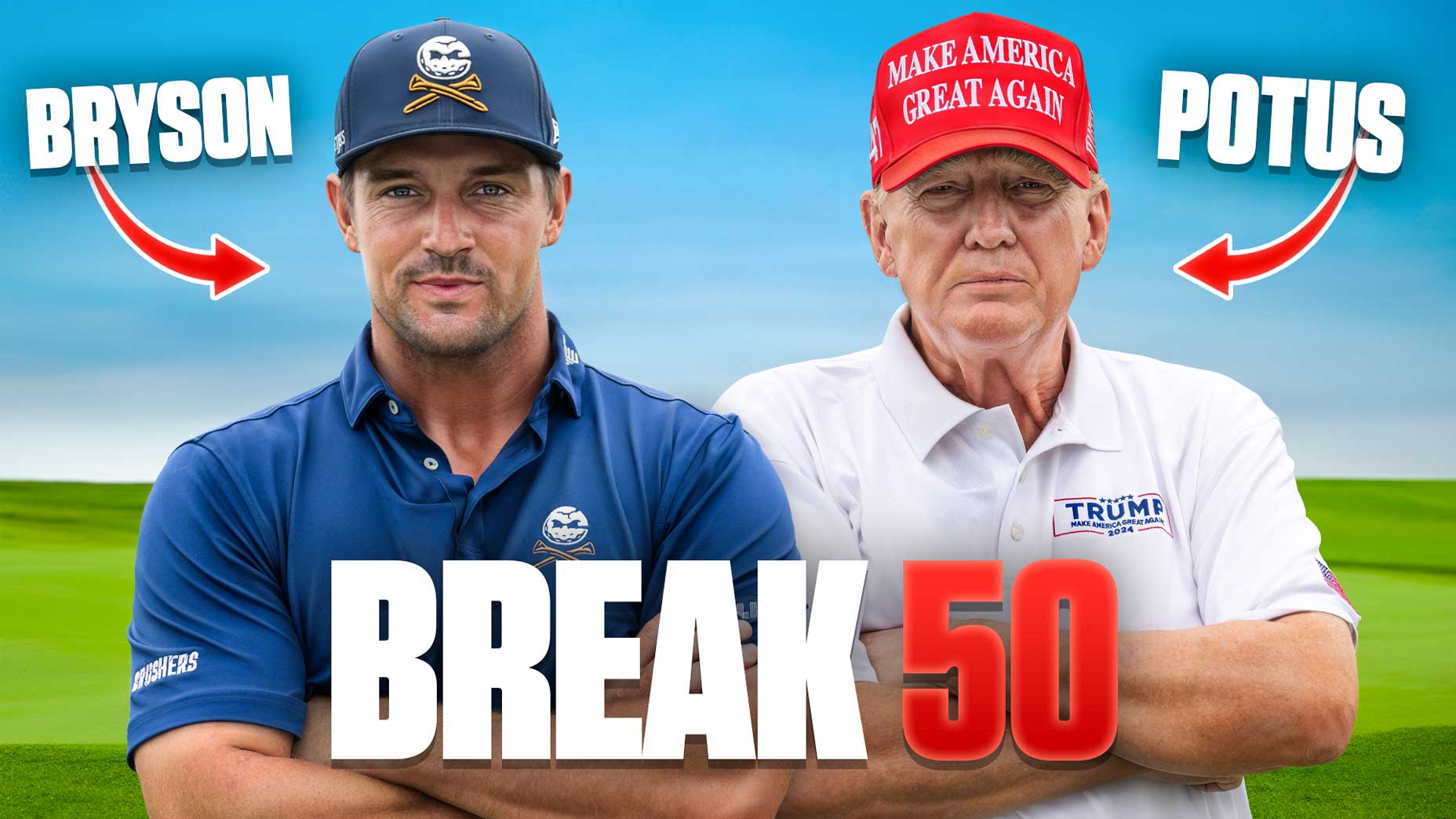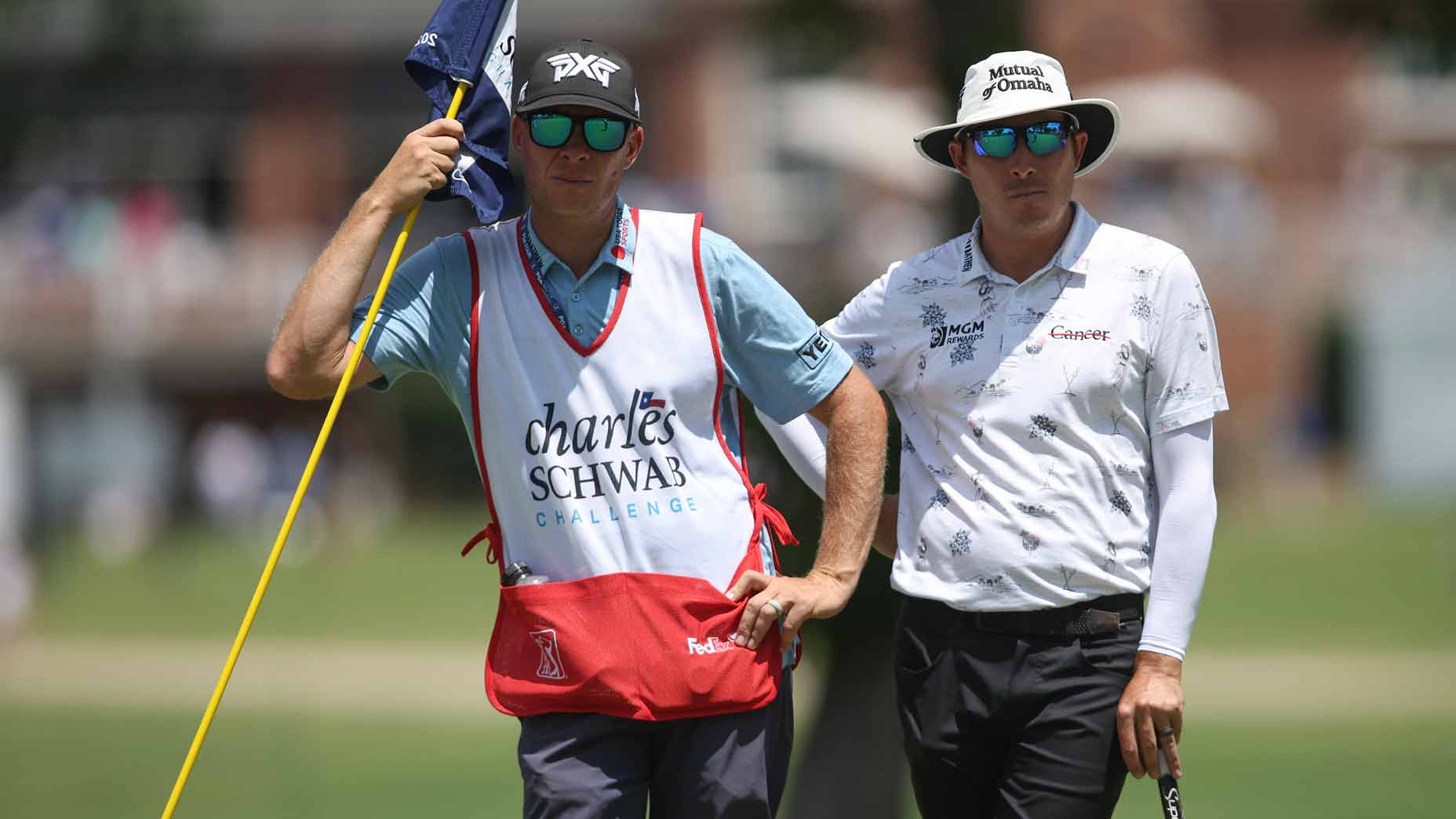The golf was as sloppy as your drunken uncle at the Thanksgiving table and the banter was as canned as cranberry sauce.
But the Goodyear blimp worked nicely, and so did Charles Barkley, and somehow it kinda, sorta came together.
Was coverage of The Match a spotless production?
Not by a long shot.
Better to call it a better-than-average beta, a glitchy but promising test run for a franchise-in-the-making that was more entertaining than the sum of its imperfect parts.

That the broadcast would face problems became apparent before Phil and Tiger got to the first tee, when last-minute subscribers learned that the pay-per-view event would not be pay-per-view at all; an 11th-hour glitch in Bleacher Report’s “charging function” led to the coverage being streamed for free on Bleacher Report’s website.
This, of course, was a break for consumers. But it also felt a bit like karmic payback for the powers-that-be: what gave them the right to put the squeeze on us for what was little more than a modern adaptation of Shell’s Wonderful World of Golf?
The answer, we were told, was that this would be different: a tete-a-tete between the two greatest talents of their generation, competing for unprecedented match-play sums in an intimate context that would showcase their skills—and their personalities—in ways that we’d never seen before.
All that plus side-bets worth more money than most families earn in a year.
The stuff of spectacle, for sure.
And yet even Turner seemed to sense that Phil and Tiger alone, playing for filthy lucre, wouldn’t be enough to draw an audience beyond the nerdiest of golf nerds.
And so the network brought in a host of reinforcements.
Along with Ernie Johnson, the affable Everyman on play-by-play, came a cast of characters of the kind that might turn up at a celebrity pro-am. Peter Jacobsen and Darren Clarke were there for commentary. So was Sir Charles. And Samuel L. Jackson, who also handled first-tee introductions. And Bleacher Report’s Adam Lefkoe was there to relay the gambling odds and Vegas casino action. And Pat Perez, the So-Cal Tour pro surf bro, though his role seemed mostly confined to calling on Phil and Tiger to talk more smack.
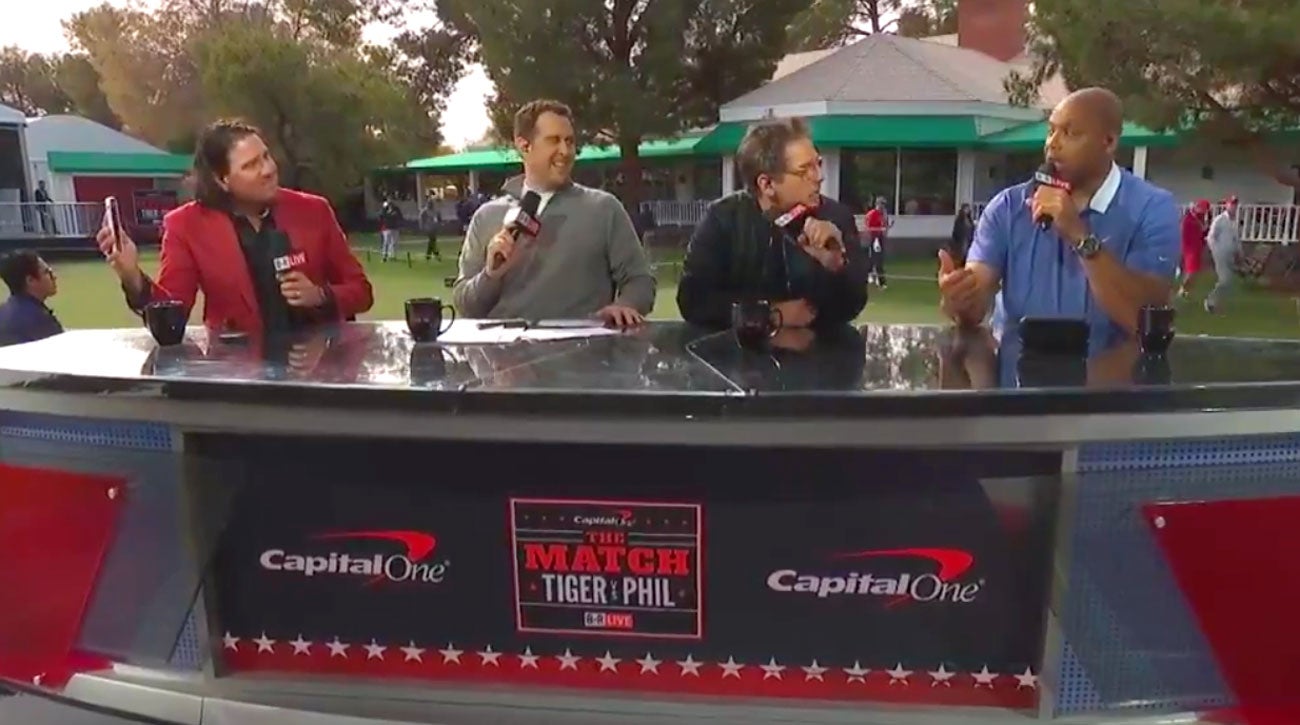
Natalie Gulbis and Sean Bacon were on hand, too, as on-course reporters, but they weren’t afforded much time to delve too deeply, and among his other duties, Bacon was dealt the unenviable task of trying to coax a colorful quote or two from Woods—the on-air equivalent of pulling teeth.
Which brings us to the broadcast’s weakest link.
A central promise of The Match was the prospect of insight by way of access. But miking up players is only compelling if the players have something compelling to say. In the early goings, Phil and Tiger tried—either gamely or lamely, depending on your viewpoint—to engage in conversation. They shared their admiration for Samuel Jackson’s coolness and for the splendor of the host course, Shadow Creek. They mentioned their children and how time flies and the ache of watching kids grow up. But their chit-chat didn’t last, which was probably just as well, because the talk was mostly forced and little of the audio revealed anything about either player that most viewers didn’t already know—except, perhaps, that a winded-sounding Phil could probably use more cardio, and that a sniffling Tiger would likely benefit from an antihistamine.
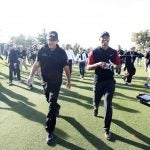
For hardcore golf fans, Mickelson tossed out a few tasty little morsels (including the phrase “tasty little morsel,” in reference to a flushed tee shot). But the main effect of the microphones was to reinforce each star’s reputation. Phil came off as talkative and eager-to-please, with more than a whiff of Eddie Haskell in him (Is “gosh” and “darn” what he really says in response to a poor shot when the camera’s aren’t on?), while Tiger cut the profile of the solitary soldier, prone to slightly rougher language (“damn” to Lefty’s “darn”) but probably the most famous person on the planet whose words will never make their way into Bartlett’s.
Over the course of four-plus hours of coverage, one of the most honest and enlightening quotes from either star was, tellingly, a reference to silence.
“I’m trying to be more talkative this nine,” Mickelson said, on the 15th hole. “But I’m not.”
In the absence of engaging banter came assorted efforts to compensate.
“I can’t believe how freaking cool this is!” Phil gushed, taking in a small crowd of invitees in a gallery off-limits to the general public.
“You run out of words to describe the beauty of this place,” marveled Johnson, who then went on to prove that he had plenty of words to describe it, after all.
Everyone was working hard. But the man who made it look the easiest was Barkley, who tends to steal all shows and who really stole it here by being at his blunt and comedic best.
“This is some crappy golf,” he noted, as Phil and Tiger scuffled. “I could beat these two today!”
Ok, maybe not. But point taken.
To complement its coverage, Turner employed assorted whiz-bang features, including (distractingly noisy) drones for high-def flyovers, and Top Tracer, a nifty technology that would have been niftier still if it had a greater number of good shots to trace.
More highlights would have helped enliven the broadcast. But there’s no controlling that, and the Turner team made do with what they were given, milking rare bright moments like Tiger’s chip-in on 17 to square The Match for all that it was worth.
Still, there was no hiding the fact that this was something of a high-price pillow fight. And given the stale Phil-Tiger repartee, there wasn’t much solace in Peter Jacobsen’s insistence that the event was actually “more about the personalities and the interactions than it is about the golf.”
Surely, he did protest too much.
The brighter interactions came not on the course but through on-air relays of tweets from celebrity viewers like Justin Thomas and Justin Verlander, the latter of whom rang in to give Barkley a good ribbing, prompting Barkley to rib him back. Their playful smack-talk was organic, funny and accessible to non-golfers—all things that Phil and Tiger’s exchanges mostly lacked.

To punctuate it all, Barkley challenged Verlander to a $100,000 golf bet, which was fitting since—let’s be honest here— gambling was a driving force behind this whole shebang. In the run-up to The Match, the outlandish prize at stake drew its share of criticism (“One man earning $9 million isn’t attractive,” the English Tour pro Eddie Pepperell tweeted. “This putrid attempt at attention will turn out to be futile for everyone. Pathetic.”)
While $9 million is indeed a gaudy sum, it’s a drop in the bucket compared to the multi-billion dollar sports betting market—a market that golf is keen to tap.
And what better potential means of access than The Match: a hyper-focused contest between two big names, with a chance to plunk down money on every shot. What Phil and Tiger called “challenges” were actually wagers, and lots of folks were making them, as was cheerfully reported throughout the broadcast.
As if to underscore the point, as the day wore down, and the match progressed to extra holes, Charles Barkley vanished from the broadcast. Poof. Just like that. His was a glaring absence, but it went largely unmentioned, except by Pat Perez, who said that Sir Charles had likely left the premises in search of “action.”
Where he’d gone was unclear. But two things seem certain: he’ll be back, and so will some version of The Match.
At least, both seem like pretty good bets.



